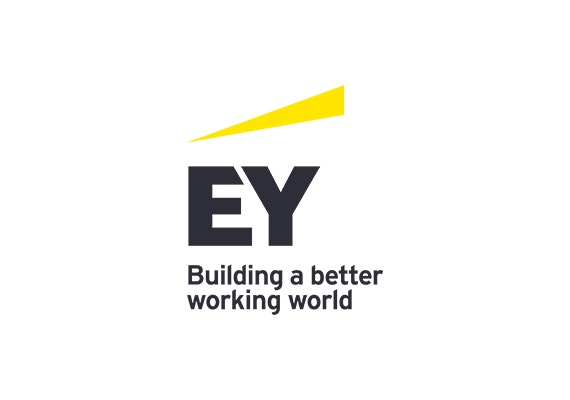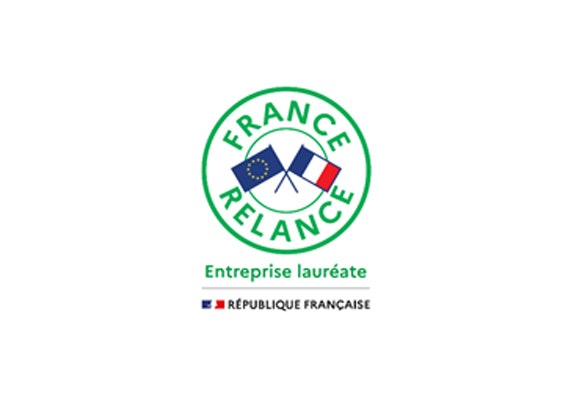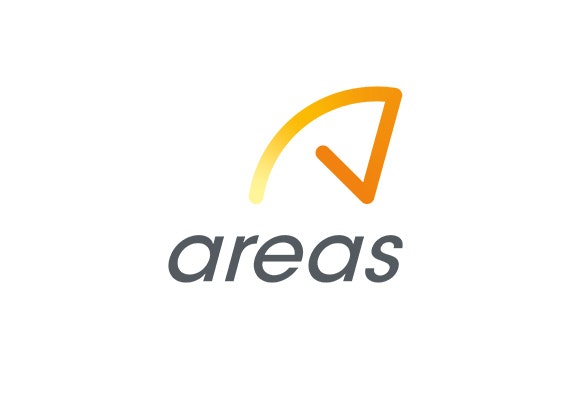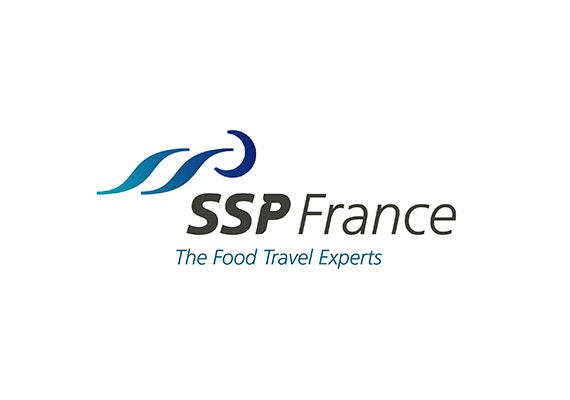Take action together with project ZEFIRO
VINCI Airports and Lyon Airport help you to consume differently
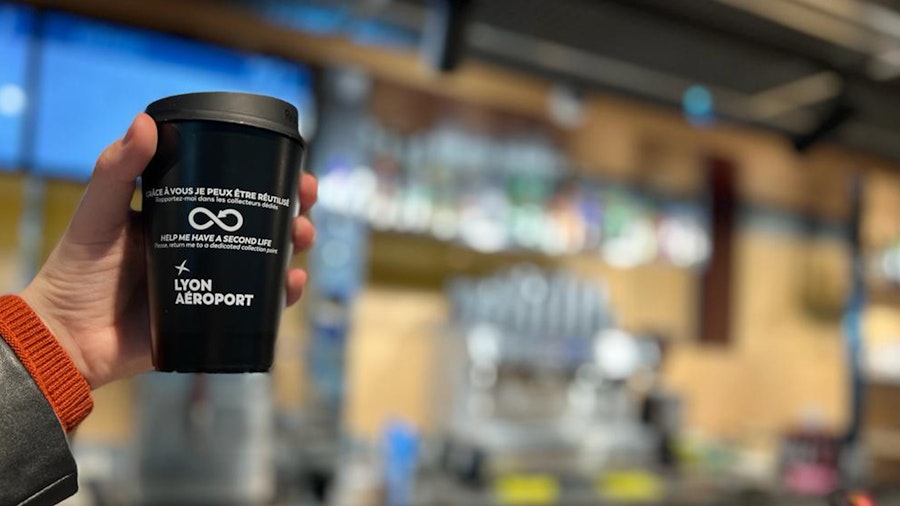
Moving towards sustainable mobility is the crucial challenge of the decade 2020-2030 in line with the VINCI group’s strategy. VINCI Airports and Lyon Airport are taking steps to reconcile mobility and the environment. Far from being a constraint, making adjustments in favour of the environment is a tremendous source of innovation.
Our new project ZEFIRO, in its trial phase from 28/02/2022 and during 4 months at Lyon Airport, illustrates this proactive approach while meeting our objective of optimising resources via the circular economy and recovering 100% of waste by 2030.
For this project launch, we were assisted by the consultancy firm EY & Associates Sustainable Development.
This project is carried out with financial aid from ADEME as part of the Economic Recovery Plan.
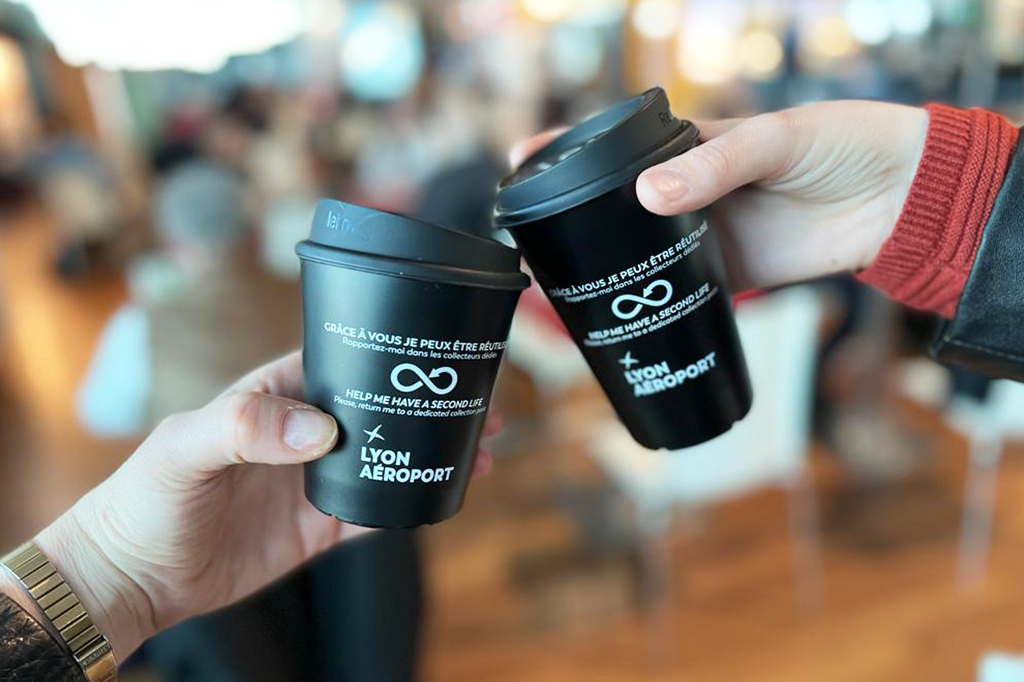
Behind project ZEFIRO:
a stark observation
4,900 cups made from a mix of cardboard and plastic for transporting and drinking hot beverages like coffee or tea are used and thrown away each day at Lyon Airport. Taking into account the entire life cycle of the disposable cup*, this represents a total of approximately 42 kg of CO2 equivalent emitted each day. The equivalent of 218 km done by car, i.e. a trip from Paris to Lille every day.
It should be noted that although cups made from this cardboard-plastic mix have the advantage of using less plastic than traditional disposable cups, the need for wood for pulp is 13 times more water consumption and twice as much electricity consumption.
*See the results of the LCA study conducted internally on the impact of climate change (kg CO2e).
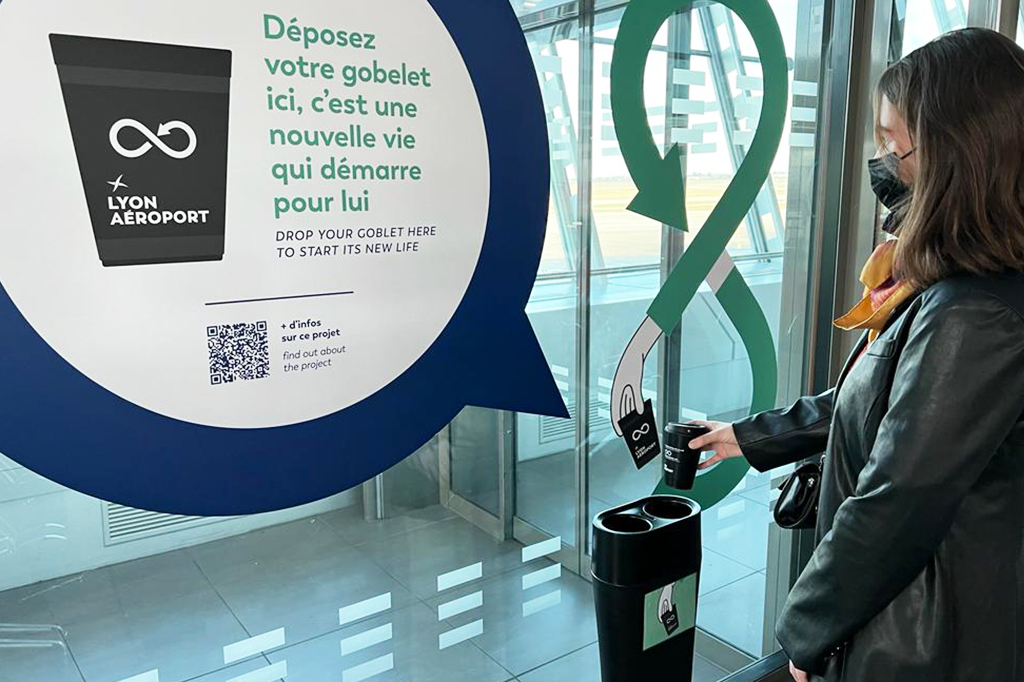
And a simple reaction…
In this context, we are convinced that we must implement solutions to limit the use of these single-use containers while ensuring that we choose an alternative that is truly better for the environment (and over its entire life cycle).
With this in mind, we asked EY, a specialist in the implementation of circular ecosystems, to assist us in determining the most suitable solution for Lyon Airport.
The result of this study was a preference for cups that can be reused many times, collected, and washed at the airport.
This will eventually prevent more than 14,846 kg (almost 15 tons) of plastic waste per year from the airport's cups alone*.
*Taking 8.3g for disposable cups, 26g for cups that can be reused 500 times, and annual consumption of 1,800,000 cups (data from Lyon Airport for the year 2019).
A solution: Re-use
The ZEFIRO project would not have seen the light of day without our partners and your participation when buying a drink at our businesses. A simple action is all that’s required: instead of throwing your disposable cup in a general waste bin, place it in a dedicated collection bin displayed in the image on the right.
Your cup can then be re-used up to 500 times!
The project is part of a circular economy approach and is based on a principle of trust. Our company is evolving with the times and aims to highlight this practice that promotes collective participation – Every action counts.

Committed partners
Our disposable cups would not be of much interest if nobody helped us put them to use. Two catering companies at Lyon Airport are concerned about the environmental impact of their activity and are convinced that a new model is possible, and they are both key players in this project. They allowed us to implement a single cup design in their businesses and change their internal logistics.
Likewise, if you get a drink from the café “Brioche Dorée” or from “Bar 2.21” in a re-usable cup, this is thanks to SSP.
When you are at Lyon Airport, after finishing your favourite hot beverage, you will notice under the disposable cup that there is an arrow pointing to the letters “PP”. This indicates the material the cup is made from: polypropylene, a type of plastic.
Re-usable 500 times, 100% recyclable, and lightweight, this material was not chosen by chance. It has very substantial advantages, which are multiplied the more you bring back your cup, as “re-usability” is only possible with your help - consumers are the key players in this responsible approach.
According to Zero Waste France: “With regard to greenhouse gas emissions, a re-usable plastic cup (e.g., Ecocups) represents, on average, 2 times fewer emissions (0.0100 CO2equivalent) than a disposable plastic cup (20 g CO2equivalent) and 3 times fewer emissions than a biodegradable cup (28.5 g CO2 equivalent).” And these figures are calculated considering the transport between the places of use and washing of 50 km. For Zefiro, the results would be even better since we wash our cups at the airport (= 0 km). Re-use is therefore key.
Here is why other materials were not selected:
Biodegradable plastics
(decomposed by the action of micro-organisms)
- Single-use: ongoing replenishment required
- Separate collection required (additional transport)
- Only biodegradable under specific conditions (temperature, humidity)
- Can mislead consumers into thinking they can dispose of a cup in nature without any environmental impact.
Bio sourced plastics
(made from 100% or partially renewable polymers)
- Made from wheat/corn/sugar cane not intended for human or animal consumption.
- Single-use: ongoing replenishment required
- Can mislead consumers into thinking they can dispose of a cup in nature without any environmental impact.
Glass/Ceramic
- Breakable (sharp shards): dangerous with the constant flux of travellers in airports
- Breakage can increase the loss rate
- These are heavy materials requiring more energy to transport and their storage involves more constraints.
Lastly, as mentioned previously, polypropylene is 100% recyclable. It can even be recycled several times before end-of-life and can then be incinerated with a significantly lower emission rate of toxic substances than other plastics. These are not the only reasons for this choice: the properties of PP make it one of the most widely used plastics in food packaging as it is non-toxic*, BPA-free**, and resistant to chemical aggressions and heat of up to 100°C.
For all these reasons, polypropylene seems to be the most suitable solution for our needs and the most efficient in terms of pollution, with a good re-use rate.
*Out of the 7 types of plastics available, numbers 2, 4, and 5 are preferred with regard to toxicity. Polypropylene is number 5. (Réseau environnement santé)
**Bisphenol A is a synthetic chemical commonly used in the industrial manufacture of plastics [...]. Adverse health effects are suspected in humans even at low levels of exposure. (Source: https://www.ecologie.gouv.fr/)
We are not claiming that these cups have zero impact (that would be absurd), but we are convinced that we can limit the environmental impact of beverage consumption by promoting re-use. Indeed, we have carried out a comparative Life Cycle Assessment of the new cups versus the single-use cups previously sold at the airport to illustrate how the environmental impact is minimised.
A simplified version of the results is provided below, more details are available in the LCA report by clicking here. This report presents results according to various categories of environmental impact, but let us note this figure: for the four-month test period of the project alone, more than 600 kg of waste will be avoided.
*Life Cycle Assessment (LCA) identifies and quantifies, throughout a product’s life, the physical flows of materials and energy associated with human activities. It assesses potential impacts then interprets the results with regard to its initial objectives. (Source: ademe.fr)
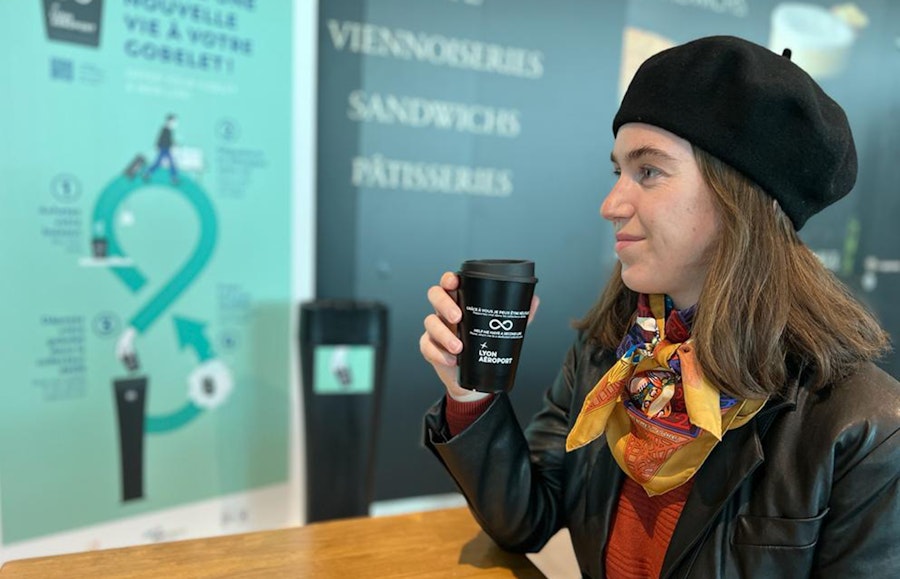
Discover more
Find content that might interest you



